Nostalgia Drags: Time Marches On
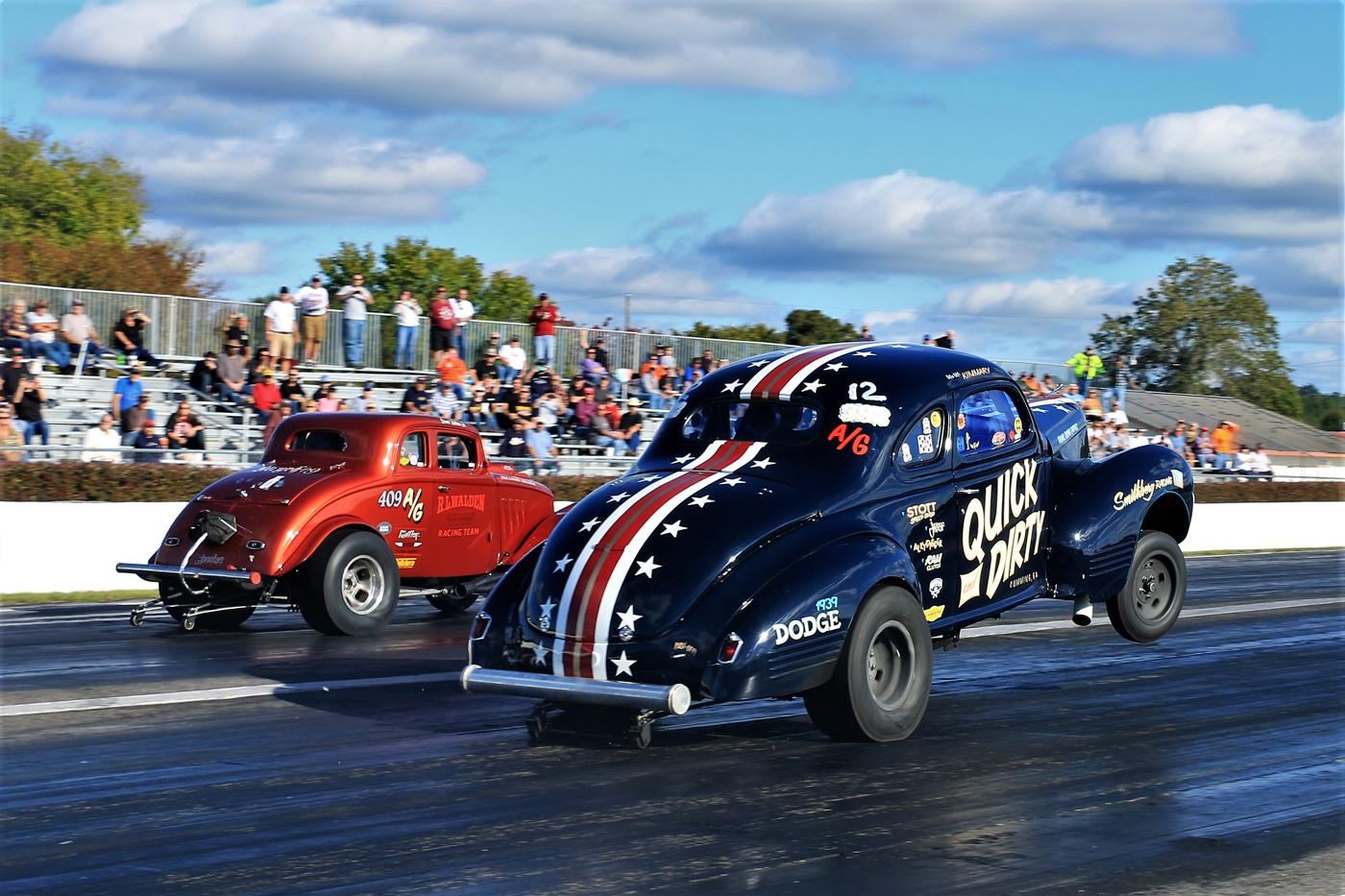
While great care is taken to capture the look and feel of these old-school race cars, a peek underneath the bodywork reveals a range of modern solutions that have contributed to improvements in safety and performance.
Aesthetics play a particularly crucial role in Nostalgia drag racing, and capturing the vibe of renowned machines from decades past goes beyond recognizable liveries and iconic match-ups. Period-correct powertrains, wheel styles, and even suspension setups often play important roles in the quest to capture the essence of these well-known cars and drivers.
Yet at the same time the march of time has introduced opportunities to improve these cars’ durability, performance, and safety while retaining the qualities that make the homage recognizable. Meanwhile, other factors—like the skyrocketing values of original vintage parts—have convinced many Nostalgia series organizers to take an increasingly pragmatic approach to their rule sets in order to ensure that competitors can continue to participate. That, in turn, is bringing more contemporary hardware into the fold.
“There’s a lot of technology being used in terms of data acquisition and things like that,” said Mike Rice of the NHRA Hot Rod Heritage Racing Series, Glendora, California. “Everything evolves, so we’re under a constant barrage of new products, and we’re always considering whether something makes sense for the spirit of the rule or not. We’ve definitely seen new equipment come in that made a lot of sense to allow here. In everything from Top Fuel down to the bracket classes, the racers regularly come to us and say, ‘Hey, would this be legal?’ We basically evaluate those on a case-by-case basis. We try to keep things as original as we can, but it’s a balancing act.”
Given that, we wanted to get a better sense of how organizers in Nostalgia drag racing are achieving that balance by digging into the specifics of the types of products that are, and are not, allowed in these series.
Midwest Nostalgia Pro Stock Association
Mike Ruth told us that the goal of the Midwest Nostalgia Pro Stock Association (MWNPSA) in Chicago, Illinois, is to keep the cars as period-correct as possible, but there are areas of the car where modern improvements are a necessity. “Let’s use my car—the Glidden car—as an example. When Bob raced back in the day, he didn’t have a Funny Car cage and a lot of the other stuff that we put on there for safety. Some of it just didn’t exist back then. We do a lot of NHRA events, and they tech us just like anybody else. So first and foremost they have to meet the SFI spec and the NHRA’s safety criteria to even go down the race track.”
Ruth explained that in the early days of Nostalgia Pro Stock, many were racing with the actual original cars, but eventually those machines became too valuable to continue to race. The problem was compounded by the fact that the cars also needed to be modified in order to maintain modern levels of safety, and no one wanted to do that.
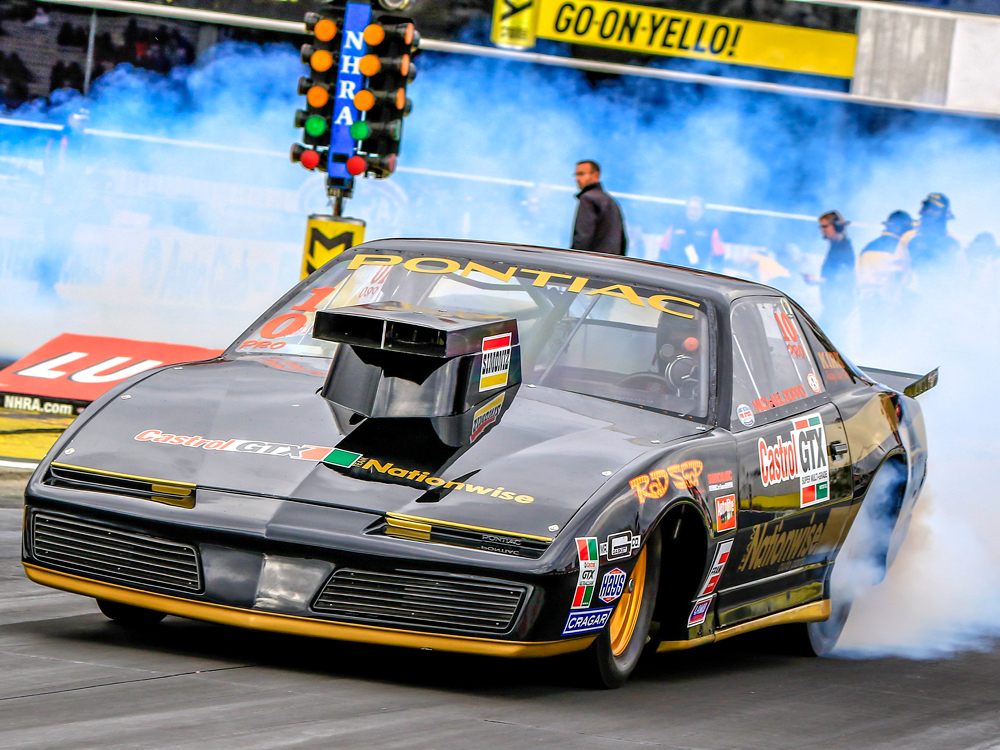
He pointed out that it’s ultimately about paying tribute to the legends more than anything else. “We’re entertainers. It’s not about setting records; it’s about putting on a good show,” Ruth explained. At the same time, he also noted that all of the cars running in the series are as quick or quicker than the original cars that they’re based on, and some of that performance comes down to the changes that competitors have been allowed to make versus the original car’s setup.
“Longevity is your friend,” Ruth said. “We get paid to go down the race track, and if the car breaks, it doesn’t matter how fast you are. So we build engines that are larger displacement than the originals just so we don’t have to beat them up as much and rev them really high. That has helped. A lot of folks have more modern suspension components on their cars. As a spectator, you’re not really going to be able to see that unless you crawl underneath the car.”
It’s pretty much anything goes aside from a few rules of thumb when it comes to engine setups. “We try to stick to conventional-style heads, and the engine needs to be aligned with the car manufacturer—a Ford in a Ford, etc.,” Ruth explained. “But as long as it appears to be a Pro Stock engine, it’s usually fine otherwise.”
Although the series does not allow EFI or power adders, data acquisition systems are fair game. “These systems allow you to resolve problems quickly instead of trying to guess,” he said. “And in terms of consistency, the data helps tremendously. The cars are running in the mid-seven-second range, so they’re a handful—especially with a clutch. So these systems have a lot of benefits for tuning. We just try to hide them so they’re not in plain sight. Between newer engine components, the data logging, the modern suspension setups, and the tires, the cars are getting faster and faster.”
As the series continues to expand its ranks, Ruth expects the landscape of MWNPSA racing to evolve in the coming years. “I’ve seen it grow from half-a-dozen cars to hundreds of cars all over the country. As older guys retire and younger guys come in, eventually we’re going to see things like Erica Enders and Jason Line clone cars. We’re not there yet. But 10 years from now we probably will be.”
Nostalgia Gassers Racing Association
A gasser’s distinct look has always been a significant part of its charm, so it makes sense for a gasser Nostalgia series to really sweat the details on that front. But organizers must also contend with the realities of the marketplace. “I think a lot of associations have backed down on the rules a bit,” said Bryan Huffman of Nostalgia Gassers Racing Association (NGRA), Kewanee, Illinois. “They were getting too fussy. They wanted racers to use parts that just weren’t really available anymore, and that was driving the costs up. Some of the wheels, for instance, became really hard to get. So now we’re seeing more aluminum slotted wheels, Cragars, anything that would still be considered period-correct.”
Modern safety equipment has entered the mix as well. “The old stuff just isn’t as safe as what we have now. There were no engine diapers back in the day, and that’s an important rule for our organization. We don’t want to risk an engine failure getting oil on the tires as the car is going down the track. These cars keep getting faster, so safety is a huge priority for us.”
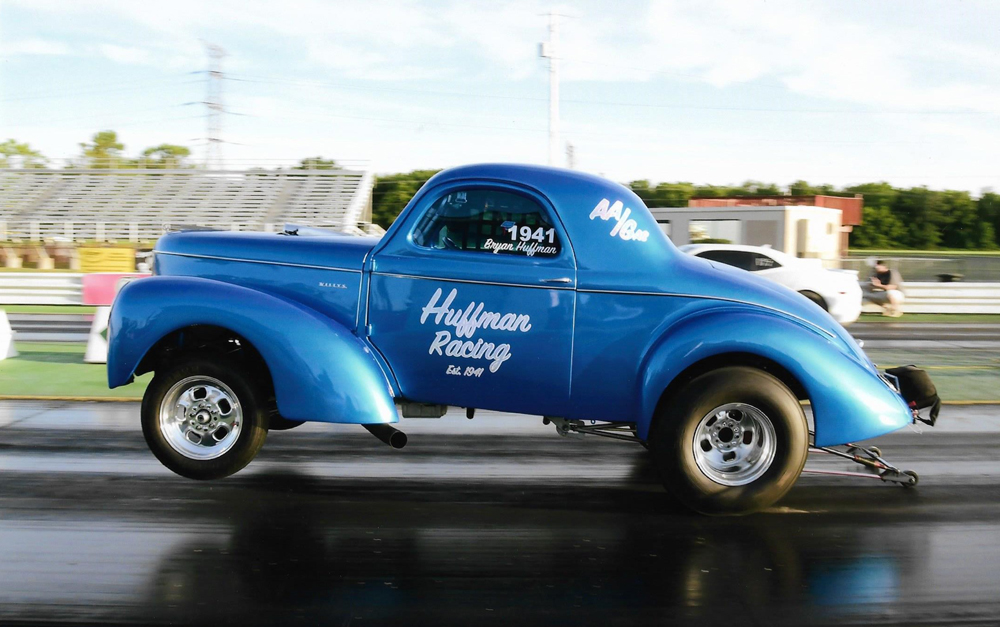
NGRA’s other guidelines tend to focus on the look of the cars more than anything else, and that plays into the equipment that these racers are using. “That’s the biggest thing, making sure that the nose height, the wheels, and the tire sizes are correct for the period is what we really focus on,” Huffman said. “We allow modern ignition systems and stuff like that, but we don’t allow things like modern EFI, turbochargers, and modern-style superchargers. But we do allow methanol and the types of superchargers that they were running in the 1960s and 1970s. What’s inside these engines is totally up to the racers.”
The series also has some leniency on front suspension setups, provided the nose of the car maintains that gasser appearance. “We like the straight axle cars, but we also allow folks to run independent front suspension setups because there were a number of gassers with independent front ends back in the 1960s. Those more modern setups also make it easier to run a more modern brake system.” The series doesn’t allow racers to run independent rear suspension setups, but anything goes in the realm of solid axles.
NGRA rules prohibit stretched wheelbase and full-tube-chassis cars, but with the series competing at IHRA and NHRA tracks, the cars must meet the chassis standards for their respective ETs as in any other series. “The typical ET in our series is between 9.50 and 10.50,” Huffman noted. “So the chassis has to meet the requirements at those tracks. When it comes to safety, our drivers tend to understand that it isn’t in their best interest to do the bare minimum.”
Nostalgia Super Stock
While appearance is also key for Nostalgia Super Stock in Springfield, Illinois, Mike Singleton said that the organization’s heads-up match racing format tends to encourage some friendly rivalries that are pushing the cars to new levels. “If we didn’t evolve with the technology, we wouldn’t be going as fast as we are. We have more 8-second cars than any other Nostalgia Super Stock club in the country. And that’s a lot faster than these cars were running back in the day.”
The approach for the series is often aimed toward using old school hardware that’s been improved with modern technology. “If you were to look at the engine in my car and compare it to a current Hemi Super Stock, there’s not much of a difference,” he said. “For instance, I’m not running iron heads—I’m running Stage V aluminum heads, and I run an aluminum block as well.”
The series guidelines call for an engine block based on what would have been in the original car, period-correct carburetors, and no power adders, but the rules are pretty flexible when it comes to engine internals. “You can’t come in with a 5-inch bore space that allows for gigantic displacement, or something like that. It basically just needs to follow the original essence of the engine to a degree.”
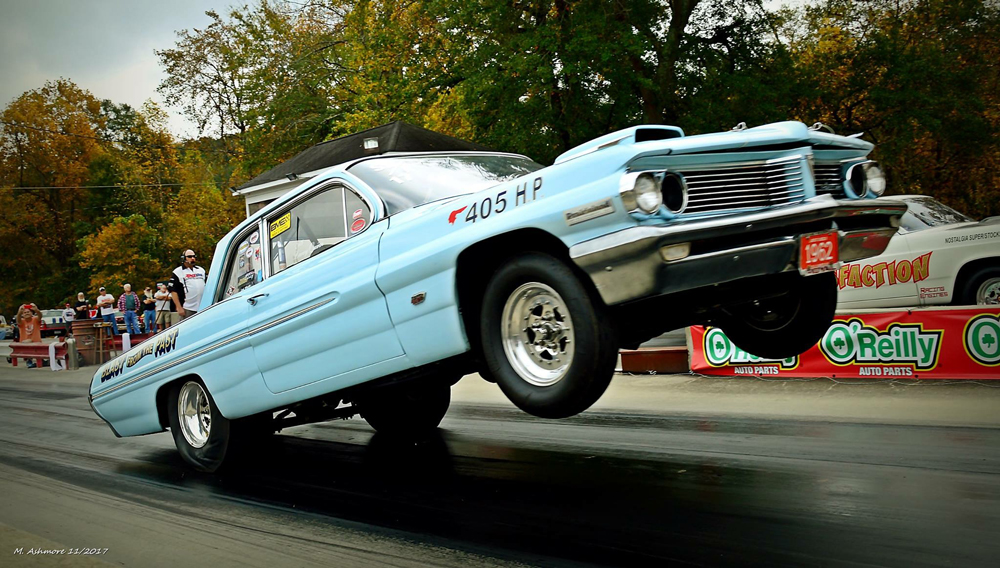
He added that the series has allowed mechanical fuel injection to be used in some instances, too. “It’s often subject to the membership of the club in terms of what gets allowed and what doesn’t.”
The series allows competitors to do more or less what they please with the suspension systems, but full tube chassis aren’t allowed outside of the AFX class, tire width is limited to 10.5 inches, and the safety elements must meet the current NHRA standards for the ETs that a given car is capable of. “We aren’t super strict about the wheels, though” he added. “It would be pretty hard to get wheels from that time period today. But we do run some events where you have to have period-correct wheels, or they won’t let you run. In those instances, we typically just look for re-creations that mimic what they were running back then.”
As with an increasing number of Nostalgia series, Nostalgia Super Stock is onboard with data acquisition. “It’s extremely hard to tune these cars without the data,” said Singleton. “And when you’re starting to run in the eight-second range, you’re also looking for data that’s going to tell you whether or not something’s going on that could hurt the motor on the next run. Some racers are also monitoring shocks and things like that, too. The heads-up format tends to incentivize making these cars as quick as they can be.”
NHRA Hot Rod Heritage Racing Series
With the NHRA Hot Rod Heritage Racing Series spanning across 11 different classes that range from pre-1986 street cars to Top Fuel dragsters, Rice said that the appearance of the cars tends to be one of the biggest areas of common focus when it comes to the Nostalgia rule set. “There’s not many parts that a racer could have run back in the 1960s or the 1970s that would still apply to some of these cars. It’s mostly about keeping the look right, so we have a lot of rules about the bodies that they can run and things like that, and we’re slowly moving the body years forward to stay in step with the audience as it evolves. What a 70-year-old considers to be Nostalgia can be very different from what a 30-year-old thinks is Nostalgia.”
The series allows racers to use modern components in terms of engine and drivetrain combinations, but the fundamentals need to follow what racers were using during a given era. “So they might be using billet parts and things like that, but you’re not going to see any screw-type superchargers, for example, and certain types of fuel pumps in some classes,” he said. “We’re trying to keep the costs under control, and we want the car to look right from a hundred feet away.”
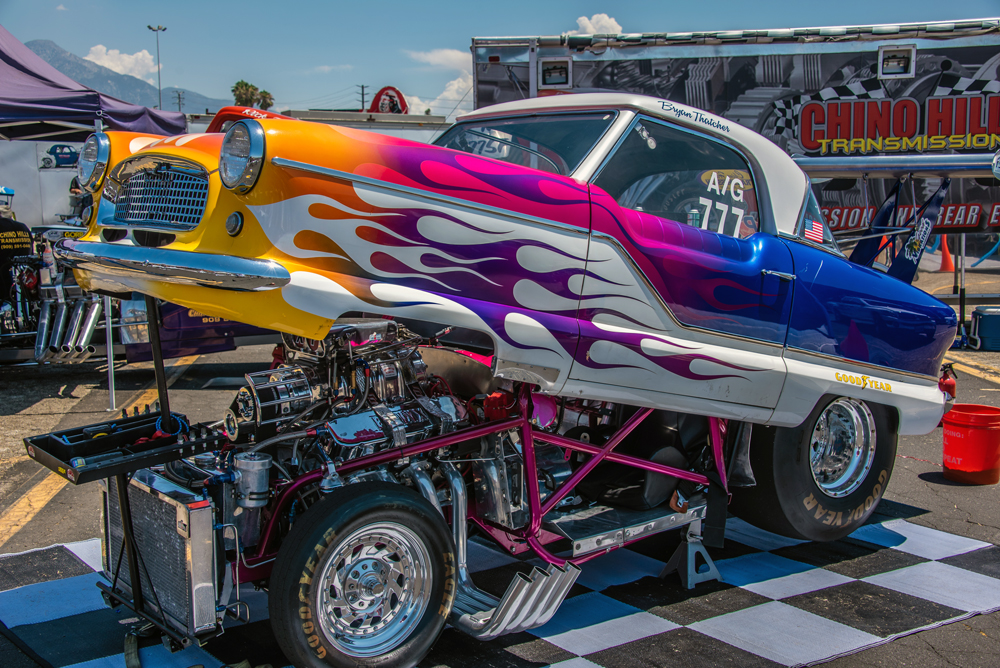
The specifics tend to vary from class to class, though. “Top Fuel classes are going to have aftermarket blocks, but most of the other classes are going to be more conventional aluminum blocks. They’re going to be a little bit different as compared to an original Chevy 454, but it’s going to follow that same basic size and design.”
The safety rules follow the NHRA’s standard guidelines based on ETs, which range from a helmet and seat belt in anything that’s running 13.99 or above to certified rollcages, five-point harnesses, fire suits, driveline loops, and SFI-rated bellhousings and other protective measures for anything quicker than 9.99.
While the nostalgic look tends to be a focal point for the Hot Rod Heritage Racing Series, Rice pointed out that there’s some flexibility in that area for most classes as well. “In Nostalgia Funny Car, for example, there’s a lot of leeway in terms of what they can do to the bodies. A ’75 Trans Am just more or less needs to retain that ’70s Funny Car look. For the door cars there’s even more flexibility—the only limits are on wheelbase and that kind of thing. Body-wise, they can pretty much make any modifications that they want.”
Rice said that he doesn’t foresee any major changes coming to the series over the next few years, but he does expect ongoing tweaks to help shape the landscape of the Hot Rod Heritage Racing Series as time goes on. “The biggest thing for us is that they look correct. And we’ll adjust body year limitations as we go forward. We’re thinking that 35 years old is what most people would consider to be a Nostalgia vehicle.”
Sources
Midwest Nostalgia Pro Stock Association
mwnpsa.com
NHRA Hot Rod Heritage Racing Series
nhrahotrodheritage.com
Nostalgia Gassers Racing Association
nostalgiagassers.com
Nostalgia Super Stock
nostalgiasuperstock.com
 MEMBERSHIP LOGIN
MEMBERSHIP LOGIN JOIN PRI
JOIN PRI


